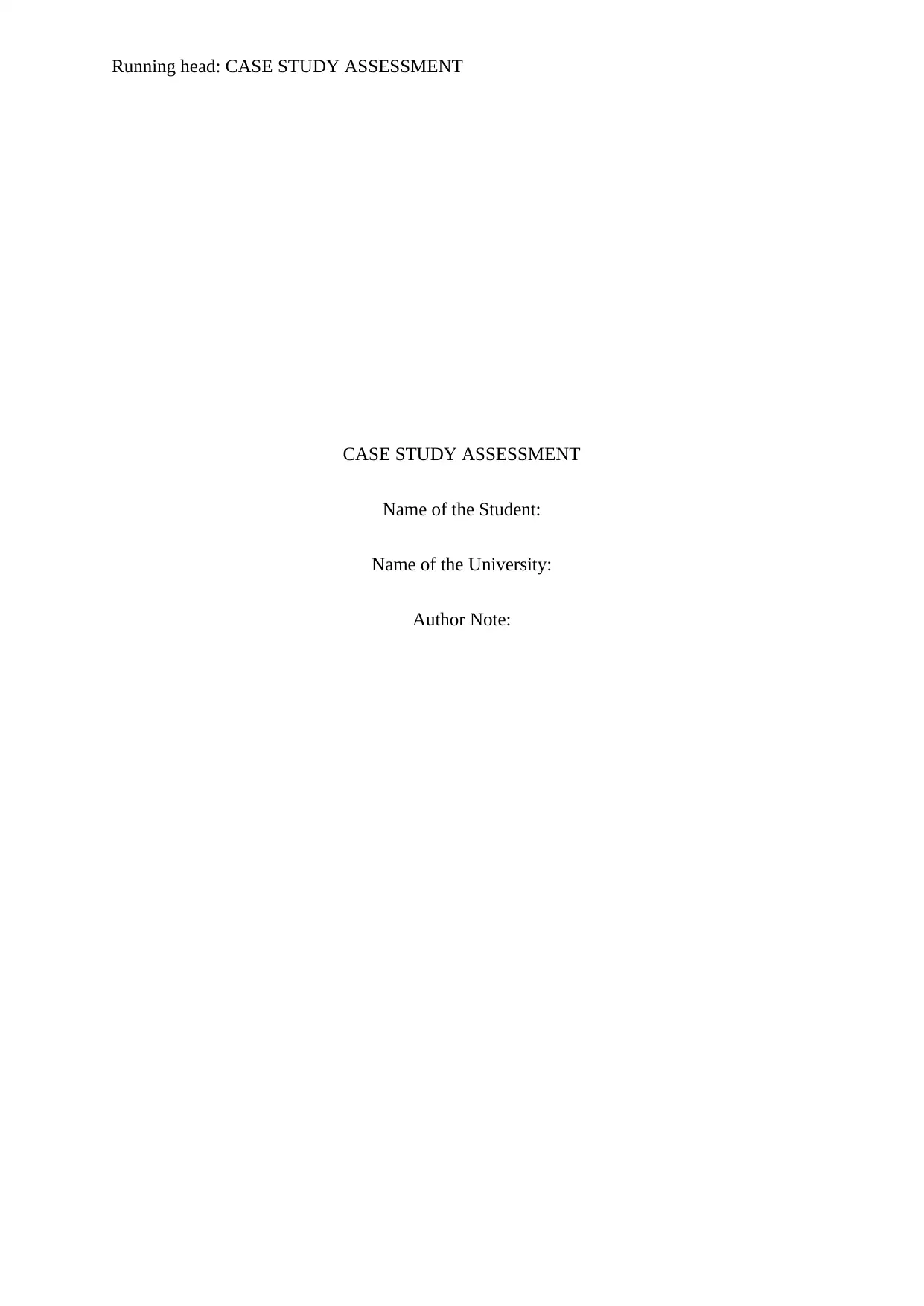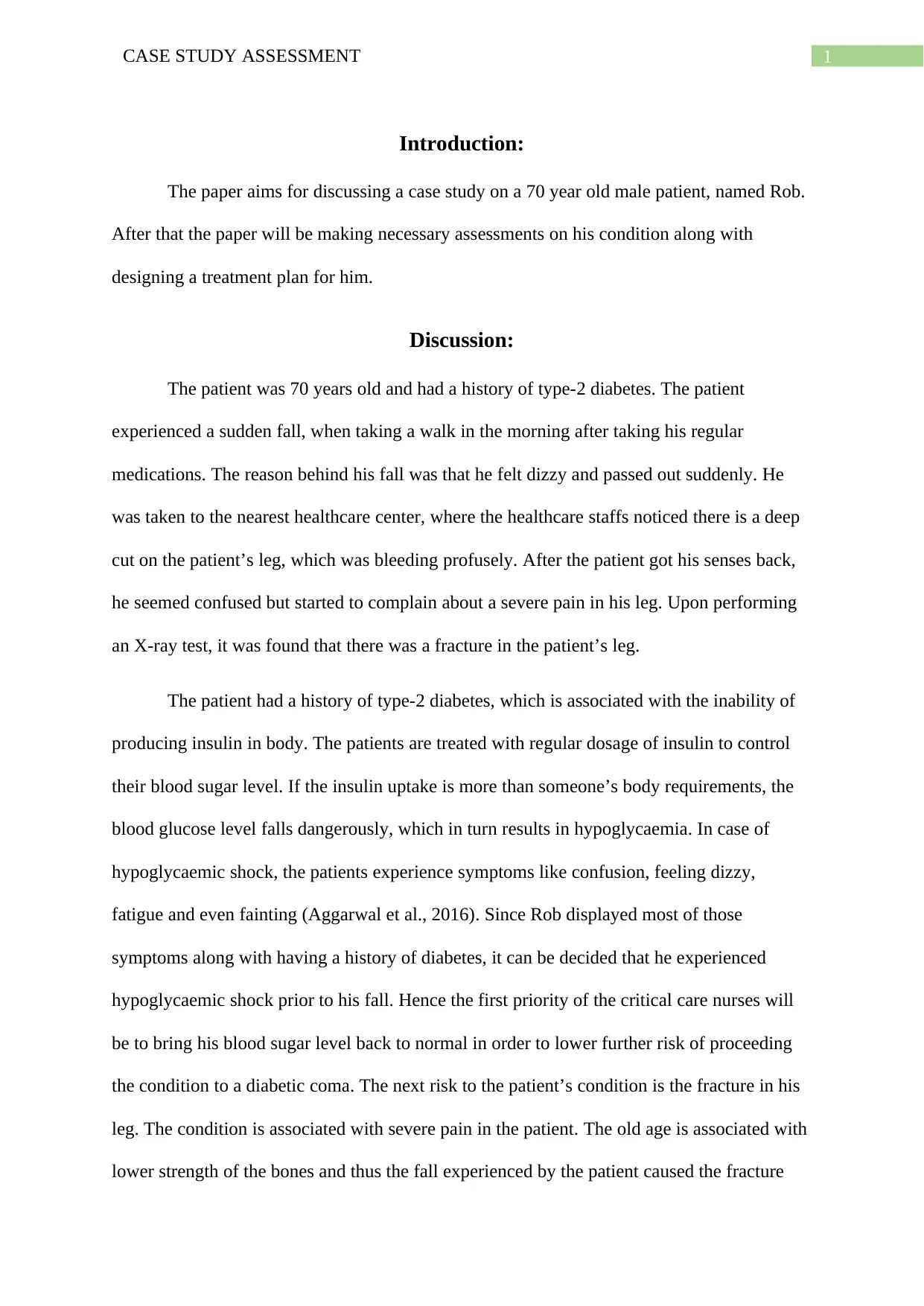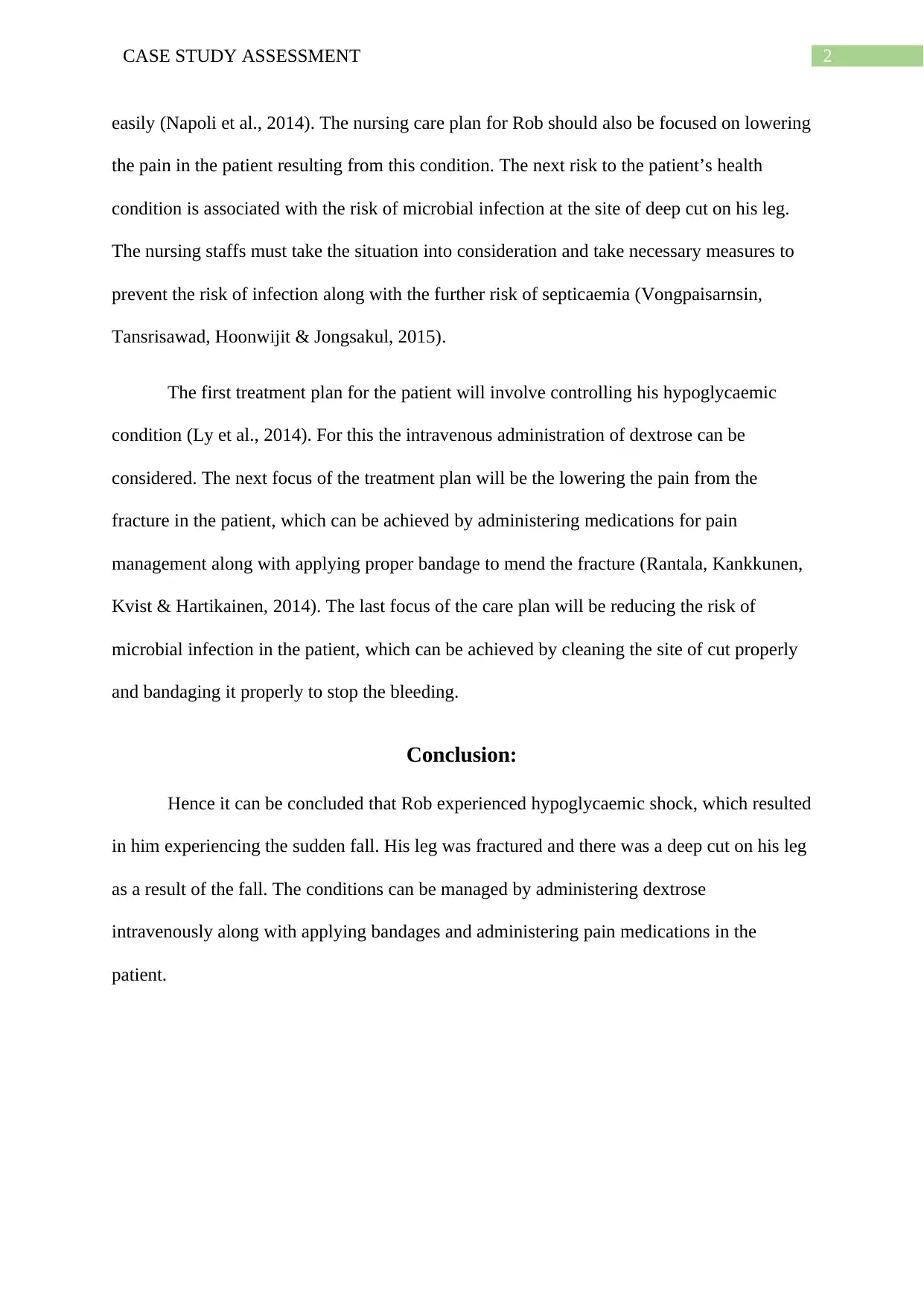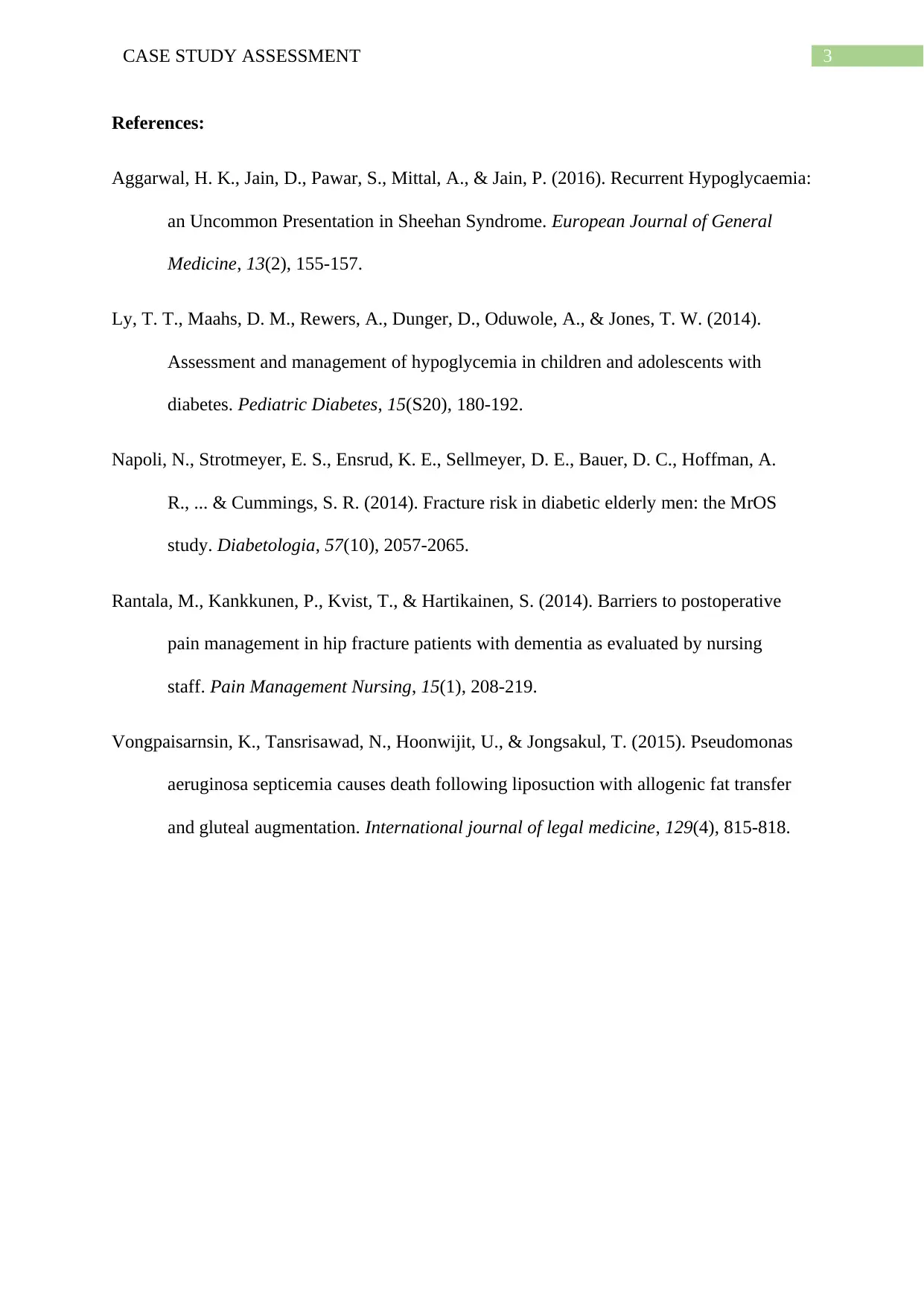Case Study: Assessment, Treatment Plan for a 70-Year-Old Male Patient
VerifiedAdded on 2022/08/09
|4
|943
|22
Case Study
AI Summary
This case study assesses a 70-year-old male patient, Rob, who experienced a fall and was diagnosed with a fracture and hypoglycemia due to his type-2 diabetes. The paper discusses the patient's history, symptoms, and the critical care nursing priorities, including managing hypoglycemia, addressing the fracture, and preventing infection. The treatment plan involves intravenous dextrose to manage hypoglycemia, pain medication and bandaging for the fracture, and wound care to prevent infection. The case study emphasizes the importance of a comprehensive care plan that addresses both the immediate and potential long-term health risks associated with the patient's condition. References are provided to support the analysis and treatment strategies. The case study aims to provide a clear understanding of the patient's condition and the necessary nursing interventions.
1 out of 4











![[object Object]](/_next/static/media/star-bottom.7253800d.svg)